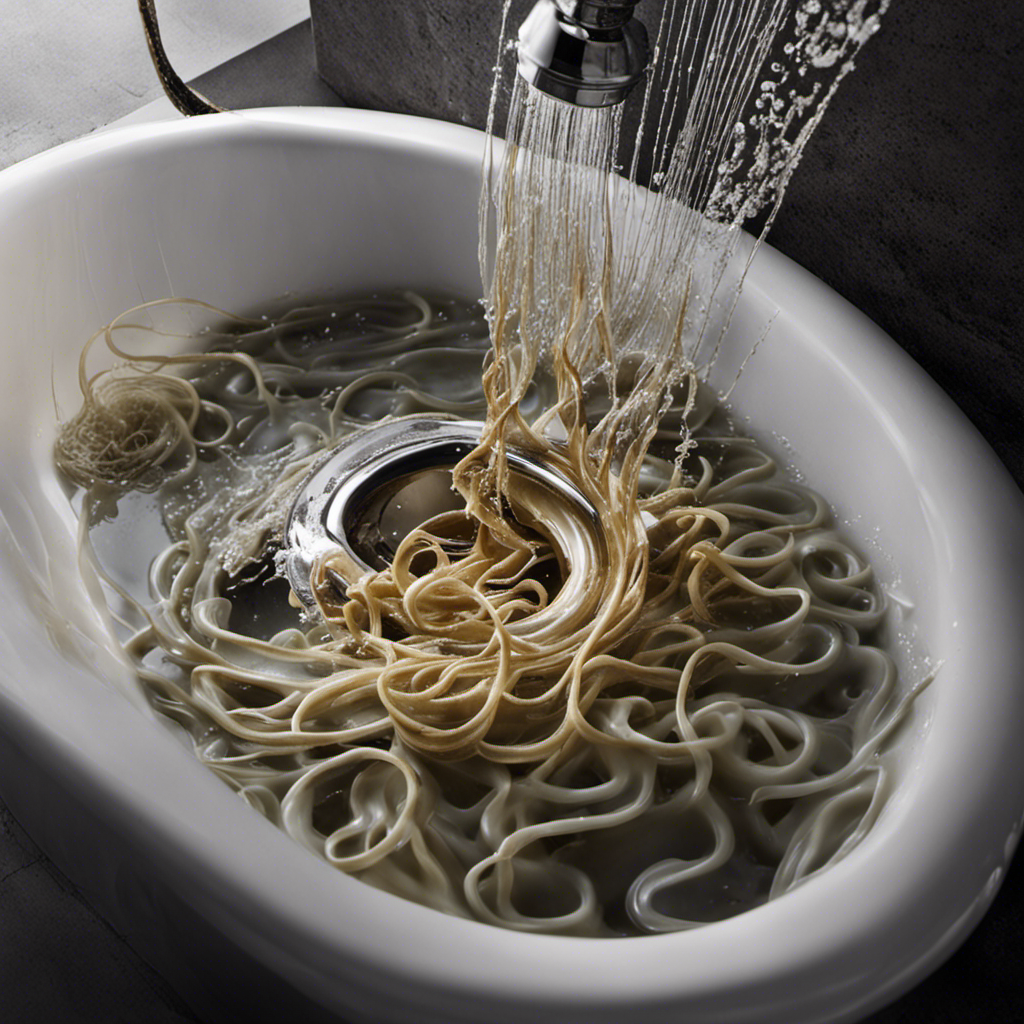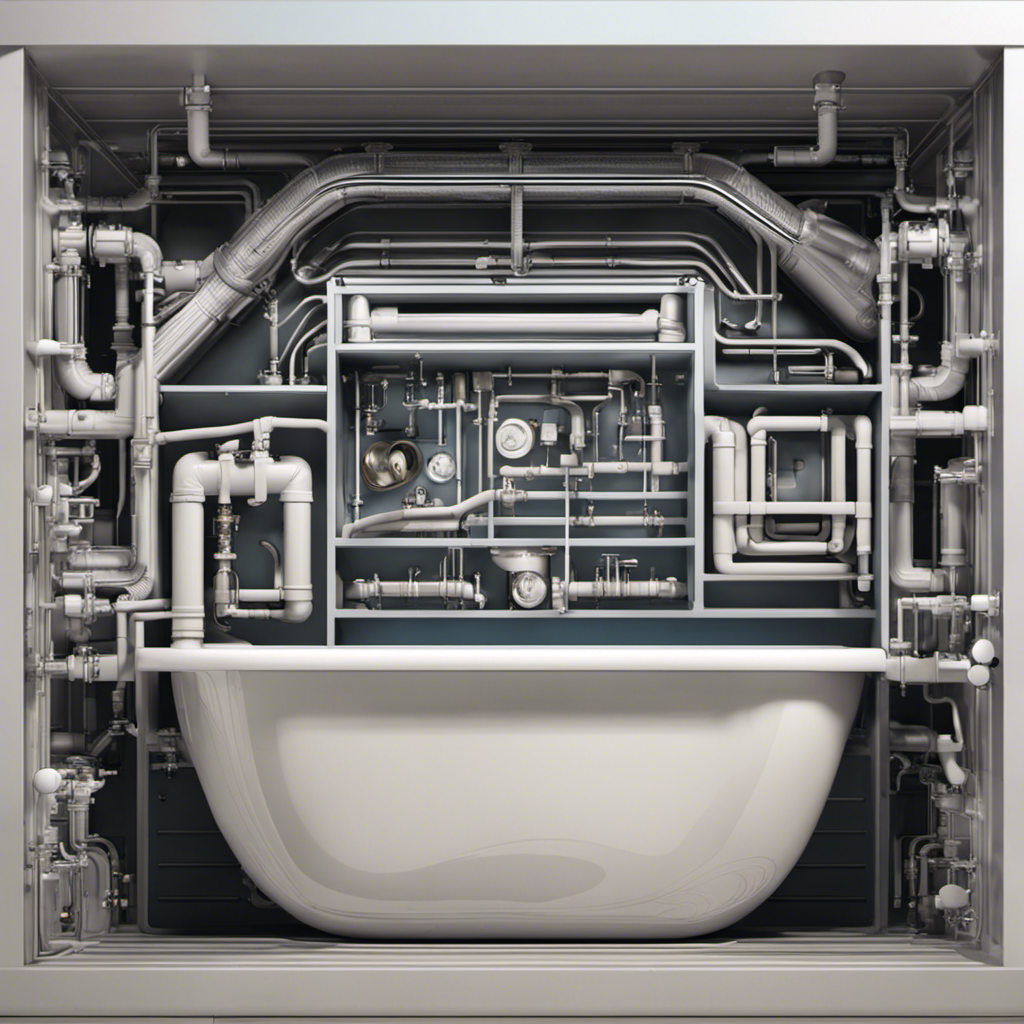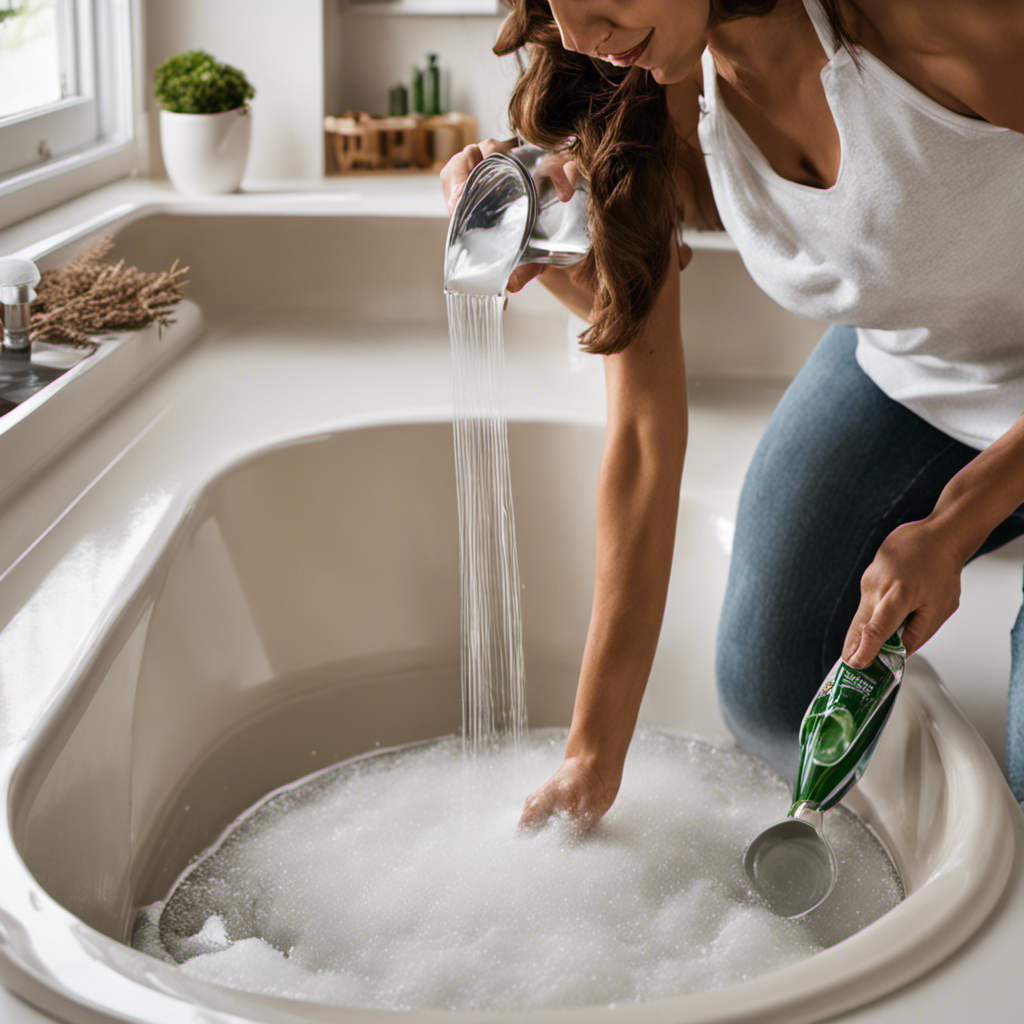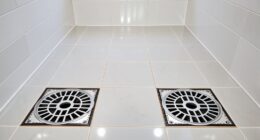I know the frustration of standing ankle-deep in water as I shower, wondering why my bathtub is clogged yet again. But fear not, for I have delved into the depths of this plumbing predicament to bring you the answers you seek.
In this article, we will explore the common causes of bathtub clogs, the telltale signs to watch out for, and DIY methods to unclog your drain.
So sit back, relax, and let’s plunge into the world of clogged bathtubs together.
Key Takeaways
- Common causes of bathtub clogs include build-up of hair and soap scum, lack of regular maintenance, foreign objects in the drain, hard water deposits, and insufficient water flow.
- Signs and symptoms of a clogged bathtub include slow drainage, standing water after use, unpleasant odors from the drain, gurgling sounds from the drain, and water backing up into other fixtures.
- DIY methods to unclog a bathtub drain include using baking soda and vinegar, boiling water, a plunger, a plumbing snake, and removing and cleaning the drain trap.
- It is recommended to call a professional plumber for bathtub clogs if DIY methods have been unsuccessful, there is a complete blockage of the drain, repeated clogs despite maintenance efforts, signs of a more serious plumbing issue, or lack of experience or tools to address the problem.
Common Causes of Bathtub Clogs
One of the most common causes of bathtub clogs is a build-up of hair and soap scum. Regular bathtub maintenance is crucial to prevent these clogs from occurring.
As an expert in the field, I recommend a few simple steps to keep your bathtub drain clear and flowing smoothly.
First, invest in a drain cover or hair catcher to prevent hair from going down the drain. This will significantly reduce the amount of hair that accumulates in the pipes. Additionally, regularly clean the drain cover to remove any trapped debris.
Second, use chemical drain cleaners sparingly and as a last resort. While they can be effective in breaking down clogs, they can also damage the pipes over time. Instead, opt for natural alternatives such as baking soda and vinegar to keep your drains clean and clear.
Signs and Symptoms of a Clogged Bathtub
There are several signs and symptoms that indicate a bathtub is clogged. As an expert in bathtub drain maintenance, I can confidently say that recognizing these indicators is crucial for effective bathtub clog prevention.
One of the most common signs is slow drainage. If you notice that water is taking longer than usual to drain from your bathtub, it may be a sign of a clog.
Another symptom is standing water. When you finish taking a bath and the water doesn’t fully drain, it is a clear indication that there is a clog in your bathtub drain.
Additionally, unpleasant odors emanating from your drain can also be a sign of a clogged bathtub.
DIY Methods to Unclog a Bathtub Drain
Using DIY methods to unclog a bathtub drain can be a cost-effective and convenient solution. When faced with a clogged drain, many people turn to natural remedies or chemical cleaners to address the issue. Here are four effective methods that can help you unclog your bathtub drain:
-
Baking Soda and Vinegar: This dynamic duo creates a powerful foaming reaction that can break down and remove clogs.
-
Boiling Water: Simply pouring boiling water down the drain can help dissolve soap scum and other debris.
-
Plunger: Using a plunger can create suction and dislodge the clog, allowing water to flow freely again.
-
Plumbing Snake: A plumbing snake is a flexible tool that can reach deep into the drain to remove stubborn clogs.
When to Call a Professional Plumber for Bathtub Clogs
If your bathtub drain is completely blocked and none of the DIY methods have worked, it’s time to call a professional plumber.
Regular bathtub maintenance is crucial to prevent clogs and maintain the proper functioning of your bathtub drain.
Hiring a professional plumber for bathtub clogs brings numerous benefits. Firstly, they have the expertise and specialized tools to accurately diagnose and solve the problem. They can identify the underlying cause of the clog, whether it’s a buildup of hair, soap scum, or other debris, and provide an effective solution.
Additionally, professional plumbers can ensure that the clog is completely cleared, preventing future issues and potential damage to your plumbing system. By addressing bathtub clogs promptly and effectively, a professional plumber can help you avoid costly repairs down the line.
Transitioning to preventive measures, let’s explore how you can avoid bathtub clogs altogether.
Preventive Measures to Avoid Bathtub Clogs
To prevent bathtub clogs, you should regularly clean the drain and use a drain cover to catch hair and debris. Here are some preventive measures you can take to avoid bathtub clogs:
-
Clean the drain regularly: Remove any hair or debris that may have accumulated in the drain. Use a drain cleaner to dissolve any buildup or residue.
-
Use a drain cover: Place a drain cover over the drain to catch hair and larger debris. This will prevent them from going down the drain and causing clogs.
-
Avoid pouring grease or oil down the drain: Grease and oil can solidify and clog the drain. Instead, dispose of them in a separate container or trash.
-
Use hair removal techniques: If you have long hair, consider tying it up or using a hair catcher in the shower to prevent hair from going down the drain.
Conclusion
Dealing with a clogged bathtub can be a frustrating and time-consuming task. However, by understanding the common causes, recognizing the signs, and utilizing DIY methods, you can successfully unclog your bathtub drain.
If all else fails, don’t hesitate to call a professional plumber who has the expertise and tools to tackle stubborn clogs.
Remember, prevention is key, so implementing preventive measures can help you avoid future bathtub clogs. So, don’t let your bathtub become a murky swamp, take action and keep the water flowing freely.
As the saying goes, a smooth drain sweeps away all worries.










